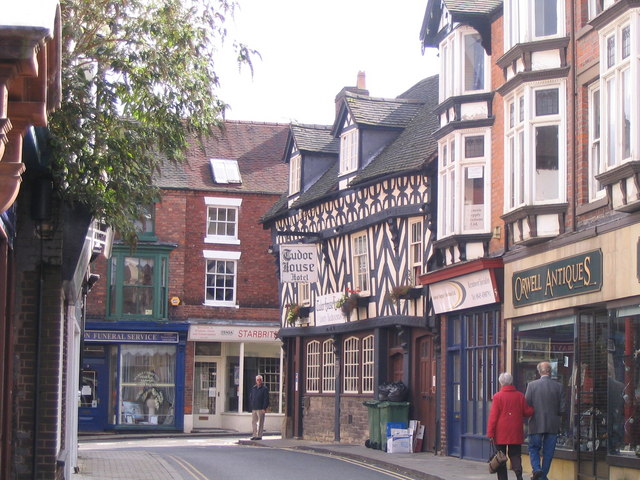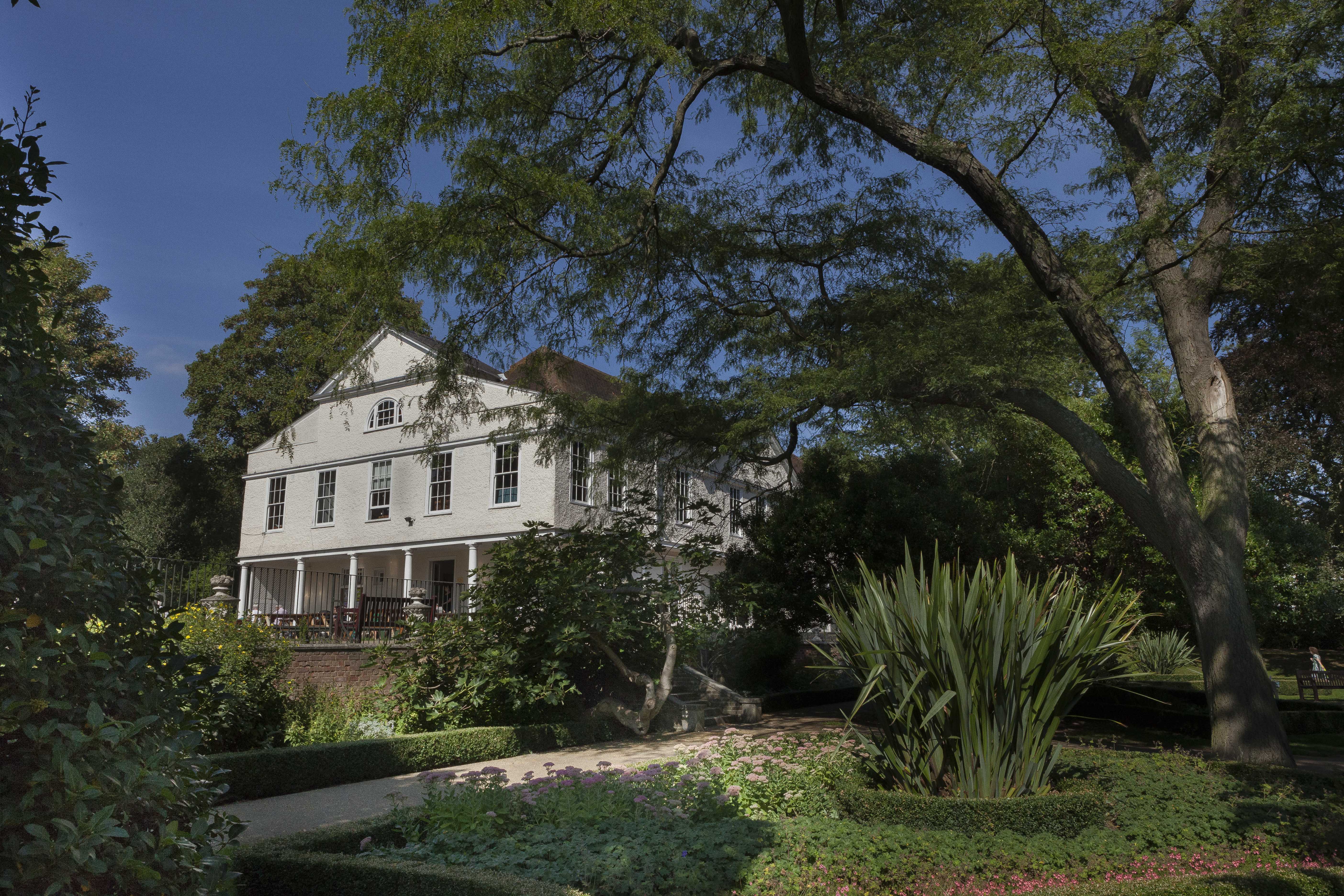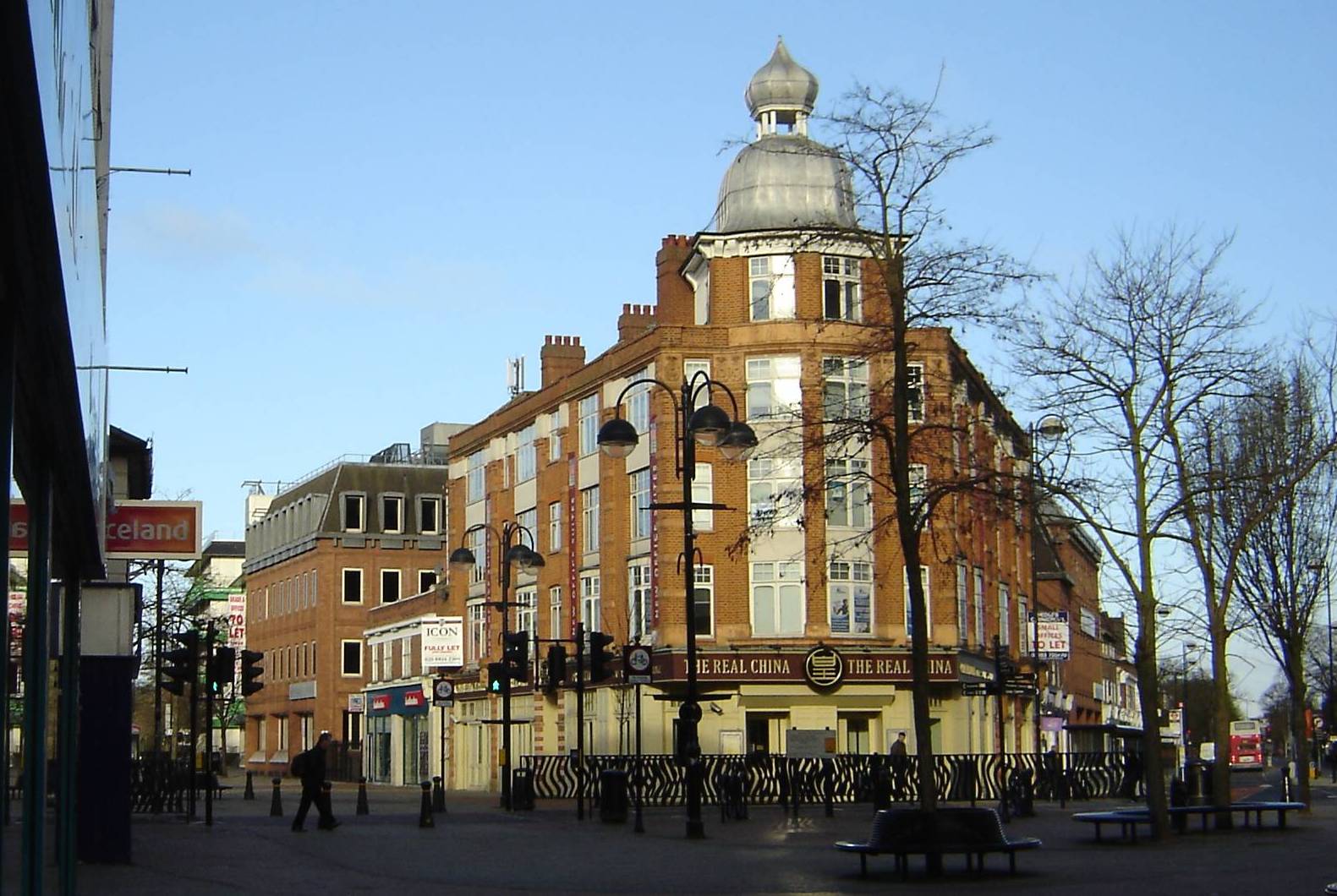|
Justinian Povey
Justinian Povey (d. 1652), held office as Auditor of the Exchequer and administrator for Anne of Denmark. Justinian Povey was the son of John Povey, an embroiderer in London. His sister Joan married William Angell, a fishmonger. A brother, John Povey, became the owner of Lauderdale House at Highgate. In 1617 Povey audited an account of jewels supplied to Anne of Denmark by George Heriot. He was listed as a member of the household of Anne of Denmark as auditor-general in 1619. Povey became auditor for Henrietta Maria and Keeper of the Woods in Yorkshire for Charles I. In 1641 Povey was living on Aldersgate in London. He also owned The Priory at Hounslow. In 1641 he was asked for evidence of the institution of a Queen's Court, concerning the property and revenues of English queens consort, and also as a court of equity, dealing with legal matters. Povey indicated the existence of documents relating to Anne of Denmark's revenue only, with a red vellum bound book of papers. Family ... [...More Info...] [...Related Items...] OR: [Wikipedia] [Google] [Baidu] |
Anne Of Denmark
Anne of Denmark (; 12 December 1574 – 2 March 1619) was the wife of King James VI and I; as such, she was Queen of Scotland The monarchy of the United Kingdom, commonly referred to as the British monarchy, is the constitutional form of government by which a hereditary sovereign reigns as the head of state of the United Kingdom, the Crown Dependencies (the Bailiw ... from their marriage on 20 August 1589 and Queen of England and Ireland from the union of the Scottish and English crowns on 24 March 1603 until her death in 1619. The second daughter of King Frederick II of Denmark and Sophie of Mecklenburg-Güstrow, Anne married James at age 14. They had three children who survived infancy: Henry Frederick, Prince of Wales, who predeceased his parents; Elizabeth Stuart, Queen of Bohemia, Princess Elizabeth, who became Queen of Bohemia; and James's future successor, Charles I of England, Charles I. Anne demonstrated an independent streak and a willingness to use fa ... [...More Info...] [...Related Items...] OR: [Wikipedia] [Google] [Baidu] |
Auditor Of The Receipt Of The Exchequer
The Auditor of the Receipt of the Exchequer was an office in the English Exchequer. The office originated in early times as the clerk of the Lord High Treasurer at the Receipt of the Exchequer. He was responsible for filing and entering the Teller's Bills from the Teller of the Exchequer, Tellers of the Exchequer, certifying monies received to the Lord Treasurer, and auditing the books of the Tellers. The title of Auditor was officially attached to the post, combined with that of Tally Writer, during the reign of Elizabeth I of England, Elizabeth I. In 1826, the duties of the Chamberlain of the Exchequer, Chamberlains of the Exchequer devolved upon the Auditor. The office was abolished on the 10th of October 1834 along with several other offices of the ancient Exchequer. Auditors of the Exchequer Early *Richard Chesterfield c. 1356 *Robert Derby c. 1363–1367 *Thomas Orgrave 1367–1369 *John Innocent 1369–1385 *John Nottingham 1385–1390 *Robert Cotum 1390–1393 *John Candl ... [...More Info...] [...Related Items...] OR: [Wikipedia] [Google] [Baidu] |
Shropshire
Shropshire (; alternatively Salop; abbreviated in print only as Shrops; demonym Salopian ) is a landlocked historic county in the West Midlands region of England. It is bordered by Wales to the west and the English counties of Cheshire to the north, Staffordshire to the east, Worcestershire to the southeast, and Herefordshire to the south. A unitary authority of the same name was created in 2009, taking over from the previous county council and five district councils, now governed by Shropshire Council. The borough of Telford and Wrekin has been a separate unitary authority since 1998, but remains part of the ceremonial county. The county's population and economy is centred on five towns: the county town of Shrewsbury, which is culturally and historically important and close to the centre of the county; Telford, which was founded as a new town in the east which was constructed around a number of older towns, most notably Wellington, Dawley and Madeley, which is today th ... [...More Info...] [...Related Items...] OR: [Wikipedia] [Google] [Baidu] |
Market Drayton
Market Drayton is a market town and electoral ward in the north of Shropshire, England, close to the Cheshire and Staffordshire borders. It is on the River Tern, and was formerly known as "Drayton in Hales" (c. 1868) and earlier simply as "Drayton" (c. 1695). Market Drayton is on the Shropshire Union Canal and on Regional Cycle Route 75. The A53 road by-passes the town, which is between Shrewsbury and Newcastle-under-Lyme. History Drayton is recorded in the Domesday Book as a manor in the hundred of Hodnet. It was held by William Pantulf, Lord of Wem, from Roger de Montgomery, 1st Earl of Shrewsbury. Drayton is listed as having a population of 5 households in 1086, putting it in the smallest 20% of settlements recorded. Domesday also lists Tyrley, which was the site of a castle later (). In 1245 King Henry III granted a charter for a weekly Wednesday market, giving the town its current name. The market is still held every Wednesday. Nearby Blore Heath, in Staffordshire, ... [...More Info...] [...Related Items...] OR: [Wikipedia] [Google] [Baidu] |
Lord Chief Justice Of Ireland
The Court of King's Bench (or Court of Queen's Bench during the reign of a Queen) was one of the senior courts of common law in Ireland. It was a mirror of the Court of King's Bench in England. The Lord Chief Justice was the most senior judge in the court, and the second most senior Irish judge under English rule and later when Ireland became part of the United Kingdom. Additionally, for a brief period between 1922 and 1924, the Lord Chief Justice of Ireland was the most senior judge in the Irish Free State. History of the position The office was created during the Lordship of Ireland (1171–1536) and continued in existence under the Kingdom of Ireland (1536–1800) and the United Kingdom of Great Britain and Ireland. Prior to the Supreme Court of Judicature Act (Ireland) 1877, the Lord Chief Justice presided over the Court of King's/Queen's Bench, and as such ranked foremost amongst the judges sitting at common law. After 1877, the Lord Chief Justice assumed the presidency of ... [...More Info...] [...Related Items...] OR: [Wikipedia] [Google] [Baidu] |
John Povey
Sir John Povey (1621–1679) was an English-born judge who had a highly successful career in Ireland, holding office as Baron of the Court of Exchequer (Ireland) and subsequently as Lord Chief Justice of Ireland during the years 1673–9. Background He was born at Woodseaves, near Market Drayton, Shropshire, eldest son of John Povey. Thomas Povey, the friend of Samuel Pepys and John Evelyn, who features often in Pepys' Diary, was his cousin. Through another Povey cousin Justinian Povey, auditor-general to Queen Anne of Denmark, the Poveys developed a useful family connection to the politically prominent Blathwayt family. John was educated at Trinity College, Oxford, and matriculated in 1636. He entered Gray's Inn in 1638 and was called to the Bar in 1645.Ball, F. Elrington ''The Judges in Ireland'' 1221-1921 John Murray London 1926 Vol. 1 pp.350-1 Career He is first heard of in Ireland in 1658, when he was acting as legal advisor to Sir John Barrington, 3rd Baronet, a politi ... [...More Info...] [...Related Items...] OR: [Wikipedia] [Google] [Baidu] |
William Blathwayt
William Blathwayt (or Blathwayte) (1649 – 16 August 1717) was an English diplomat, public official and Whig politician who sat in the English and British House of Commons between 1685 and 1710. He established the War Office as a department of the British Government and played an important part in administering the English (later British) colonies of North America. Life Blaythwayt was baptized in the parish of St Martin-in-the-Fields in London on 2 March 1649, the only son of William Blathwayt, barrister, of the Middle Temple, and his wife Anne Povey, daughter of Justinian Povey of Hounslow, Middlesex, who was accountant-general to Queen Anne of Denmark. He was born to a well-to-do family of Protestant merchants and lawyers. After his father's death, his mother remarried Thomas Vivian, of the prominent Cornish family. In 1665 he was admitted at Middle Temple. Blaythwayt joined the diplomatic service in 1668 when his uncle Thomas Povey, an influential London lawyer, foun ... [...More Info...] [...Related Items...] OR: [Wikipedia] [Google] [Baidu] |
Thomas Povey
Thomas Povey (1613/14 – in or before 1705) FRS, was a London merchant-politician. He was active in colonial affairs from the 1650s, but neutral enough in his politics to be named a member from 1660 of Charles II's Council for Foreign Plantations. A powerful figure in the not-yet professionalised First English Empire, he was both "England's first colonial civil servant" and at the same time "a typical office holder of the Restoration". Both Samuel Pepys and William Berkeley, Governor of Virginia, railed at times against Povey's incompetence and maladministration. Life The son of Justinian Povey of London, he was educated at Gray's Inn. He was a cousin of Thomas Povey, Lieutenant Governor of Massachusetts, and of Sir John Povey, Lord Chief Justice of Ireland. Povey became Member of Parliament for Liskeard in 1646, Bossiney in 1659 and held under Oliver Cromwell a high post in the Office of Plantations. Following the Restoration, he was appointed in July 1660 Treasurer to ... [...More Info...] [...Related Items...] OR: [Wikipedia] [Google] [Baidu] |
Heydon Hall
Heydon Hall is an Elizabethan house set in parkland near the village of Heydon, Norfolk, England. The hall is Grade I listed on the National Heritage List for England, and its gardens are Grade II* listed on the Register of Historic Parks and Gardens. Location The hall is just north-east of Heydon, and about north-east of Reepham, west of Aylsham and north-west of Norwich from where it is best reached via the B1149 road. History The hall was built between 1581 and 1584 for Henry Dynne, an Auditor of the Receipt of the Exchequer. From the time of Oliver Cromwell it was first owned by the Earle family being originally bought by Erasmus Earle, a Serjeant-at-law to Cromwell. An ancient oak tree at Heydon Park is said to be where Cromwell once hid from a bull, during a visit to Erasmus. A descendant, Mary, daughter of Augustine Earle married William Bulwer and it then came into the Bulwer family of Wood Dalling. The original large park covered approximately but has mostly been ... [...More Info...] [...Related Items...] OR: [Wikipedia] [Google] [Baidu] |
Lauderdale House
Lauderdale House is an historic house, now run as an arts and education centre, based in Waterlow Park, Highgate in north London, England. History Lauderdale House was one of the finest country houses in Highgate and was originally built for Richard Martin (Lord Mayor of London) in 1582 with a timber frame. In the early 17th Century it was occupied by Sir Henry Hobart, who in 1616 had built Blickling Hall, Norfolk, now a National Trust property. Later Mary, Countess of Home extended the house. In 1645 it came to Earl of Lauderdale Earl of Lauderdale is a title in the Peerage of Scotland. The current holder of the title is Ian Maitland, 18th Earl of Lauderdale. The title was created in 1624 for John Maitland, 2nd Lord Maitland of Thirlestane, Berwickshire. The second Ea ... (hence its name) as his wife Anne Home's inheritance. In 1666 it was visited by Charles II and Samuel Pepys, while Nell Gwyn is said to have lived there briefly in 1670. It was later the home of ... [...More Info...] [...Related Items...] OR: [Wikipedia] [Google] [Baidu] |
Hounslow
Hounslow () is a large suburban district of West London, west-southwest of Charing Cross. It is the administrative centre of the London Borough of Hounslow, and is identified in the London Plan as one of the 12 metropolitan centres in Greater London. It is bounded by Isleworth to the east, Twickenham to its south, Feltham to its west and Southall to its north. Hounslow includes the districts of Hounslow West, Heston, Cranford and Heathrow. Although most of the district lay within the London Borough of Hounslow, some parts fall within the London Borough of Richmond upon Thames and the London Borough of Hillingdon including Heathrow Airport. Most of Hounslow, including its Town Centre, the area south of the railway station and the localities of Lampton and Spring Grove, falls under the TW3 postcode. The TW4 postcode is made up of Hounslow West and parts of Cranford, whilst the TW5 postcode includes Heston and Cranford. Heathrow Airport and parts of Hatton comprise t ... [...More Info...] [...Related Items...] OR: [Wikipedia] [Google] [Baidu] |
Aldersgate
Aldersgate is a Ward of the City of London, named after one of the northern gates in the London Wall which once enclosed the City. The Ward of Aldersgate is traditionally divided into Aldersgate Within and Aldersgate Without, the suffix denoting whether the part was within the line of the wall or outside it. The ancient ward boundaries were redrawn in 2013; the names are preserved but their location only loosely approximates to their historic extent. The gate also gave its name to Aldersgate Street, which runs north from the former gate towards Clerkenwell. The street was wholly part of Aldersgate Without ward until a short section further north was renamed and so added to it. The gate The Wall was first built around the year 200, but Aldersgate was not one of the original Roman gates, being added later in the Roman period. The name ''Aldersgate'' is first recorded around 1000 in the form ''Ealdredesgate'', i.e. "gate associated with a man named Ealdrād"; the gate probably ... [...More Info...] [...Related Items...] OR: [Wikipedia] [Google] [Baidu] |




